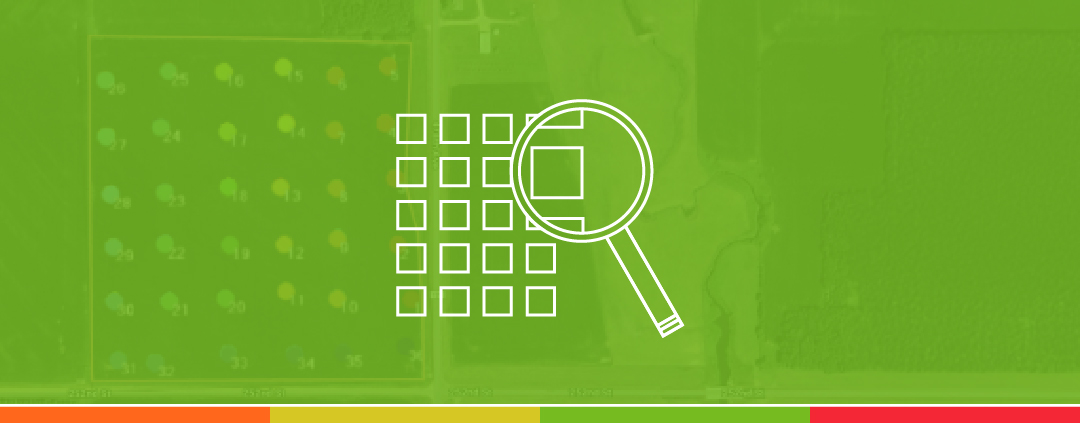by bburgeson
Share

Identifying the Right Grid Size for Your Farm
If you’re looking to get started soil sampling with a grid plan, you’re likely asking yourself what size of grids do I need to use? The true answer is that there is not a true right or wrong choice, but there are different factors to consider when deciding on what’s right for your fields. Some important factors to consider when deciding your grid size are your historical practices, repeatability, cost, and field size and variability.
Historical Practices:
Consider if this field is next to an existing or old farm site that might have had manure applied straight out of the livestock yard. If this is the case, you may want to use a smaller grid size to ensure that you are not over-applying fertilizer to areas that have had decades of manure and may not need commercial Phosphorus or Potassium. The same considerations might be made if the field was originally 2 separate fields and were merged into one with changes in ownership. While this field was managed as 2 separate fields in the past, you could continue to see effects from different field management strategies show up in your soil test results.
Repeatability:
If this is your first time grid sampling this field, you won’t have any pre-determined points that you will go back to in effort to track your field’s nutrient progressions. Looking into the future however, when you come back to soil sample this field 4 years from now, you will want to be sure to come back to the same points. In 4 years however, you may not want as small of a grid size to keep costs down. For this reason, you will likely want to use a grid size that allows you to effectively sample every other grid point (ie. Going from 2.5-acre grids to 5-acre grids.)
Cost:
The number one reason you’re looking to collect grid samples on your farm is to capture the variability of your field(s) from one side of the field to the other. To do this best, you need to take more grid samples. This comes at a cost. Not only the cost of hiring someone to physically take the samples, but also the cost of having each sample bag analyzed at the lab. Total costs will change by region, but without a doubt, the smaller grids will cost more per acre.
Overall Field Size and Variability:
Nobody knows your fields better than you do. If you farm in the hills of Ohio, you understand how changes in topography might impact your yield more than your soil nutrients do. Or if you farm in the plains, you might not have more than 5 feet of elevation change across a 100-acre field. To summarize, a 15-acre field in one part of the country might have just as much variability as a 150-acre field in other parts of the country. Fields with more variability are generally better served with smaller grid sizes.
The 3 most common grid sizes we see are 5-acre grids, 2.5-acre grids, and 1-acre grids.
Options To Reduce Your Soil Sampling Costs:
You have a few options to reduce your soil sampling expenses. The first and most effective would be to do the soil sampling yourself rather than hiring it done. VRAFY offers the tools for you or someone on your farm to take the soil cores needed for soil analysis. Another way to potentially reduce your costs is to look specifically at what nutrients you want to target and get the appropriate soil analysis from the lab. You may not need the complete analysis for every field, although the complete analysis does give you a better understanding of what nutrients might be more variable on your farm.

